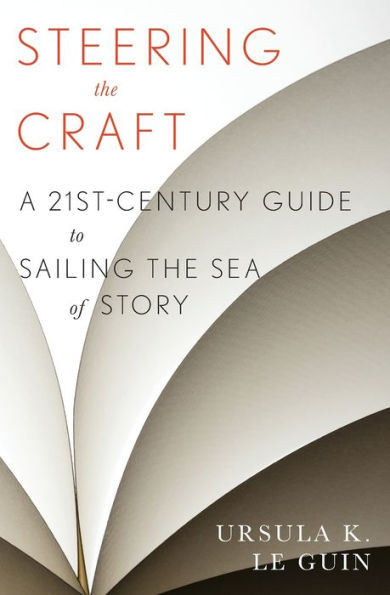Science fiction and fantasy is a vast, deep ocean. No matter how big your vessel, you’re never going explore it all; you have to pick and choose your route as you navigate. Extending the metaphor, I have my favorite ports, but I also like discovering new places, meeting interesting people, experiencing unpredictable adventures, so I keep a bucket list […]
Steering The Craft: A Twenty-First-Century Guide to Sailing the Sea of Story
From the celebrated Ursula K. Le Guin, "a writer of enormous intelligence and wit, a master storyteller" (Boston Globe), the revised and updated edition of her classic guide to the essentials of a writer's craft.
Completely revised and rewritten to address modern challenges and opportunities, this handbook is a short, deceptively simple guide to the craft of writing.
Le Guin lays out ten chapters that address the most fundamental components of narrative, from the sound of language to sentence construction to point of view. Each chapter combines illustrative examples from the global canon with Le Guin’s own witty commentary and an exercise that the writer can do solo or in a group. She also offers a comprehensive guide to working in writing groups, both actual and online.
Masterly and concise, Steering the Craft deserves a place on every writer's shelf.
1121151174
Completely revised and rewritten to address modern challenges and opportunities, this handbook is a short, deceptively simple guide to the craft of writing.
Le Guin lays out ten chapters that address the most fundamental components of narrative, from the sound of language to sentence construction to point of view. Each chapter combines illustrative examples from the global canon with Le Guin’s own witty commentary and an exercise that the writer can do solo or in a group. She also offers a comprehensive guide to working in writing groups, both actual and online.
Masterly and concise, Steering the Craft deserves a place on every writer's shelf.
Steering The Craft: A Twenty-First-Century Guide to Sailing the Sea of Story
From the celebrated Ursula K. Le Guin, "a writer of enormous intelligence and wit, a master storyteller" (Boston Globe), the revised and updated edition of her classic guide to the essentials of a writer's craft.
Completely revised and rewritten to address modern challenges and opportunities, this handbook is a short, deceptively simple guide to the craft of writing.
Le Guin lays out ten chapters that address the most fundamental components of narrative, from the sound of language to sentence construction to point of view. Each chapter combines illustrative examples from the global canon with Le Guin’s own witty commentary and an exercise that the writer can do solo or in a group. She also offers a comprehensive guide to working in writing groups, both actual and online.
Masterly and concise, Steering the Craft deserves a place on every writer's shelf.
Completely revised and rewritten to address modern challenges and opportunities, this handbook is a short, deceptively simple guide to the craft of writing.
Le Guin lays out ten chapters that address the most fundamental components of narrative, from the sound of language to sentence construction to point of view. Each chapter combines illustrative examples from the global canon with Le Guin’s own witty commentary and an exercise that the writer can do solo or in a group. She also offers a comprehensive guide to working in writing groups, both actual and online.
Masterly and concise, Steering the Craft deserves a place on every writer's shelf.
16.99
In Stock
5
1

Steering The Craft: A Twenty-First-Century Guide to Sailing the Sea of Story
160
Steering The Craft: A Twenty-First-Century Guide to Sailing the Sea of Story
160Paperback(Reprint)
$16.99
16.99
In Stock

Product Details
| ISBN-13: | 9780544611610 |
|---|---|
| Publisher: | HarperCollins |
| Publication date: | 09/01/2015 |
| Edition description: | Reprint |
| Pages: | 160 |
| Sales rank: | 38,472 |
| Product dimensions: | 5.20(w) x 7.90(h) x 0.50(d) |
About the Author

From the B&N Reads Blog
